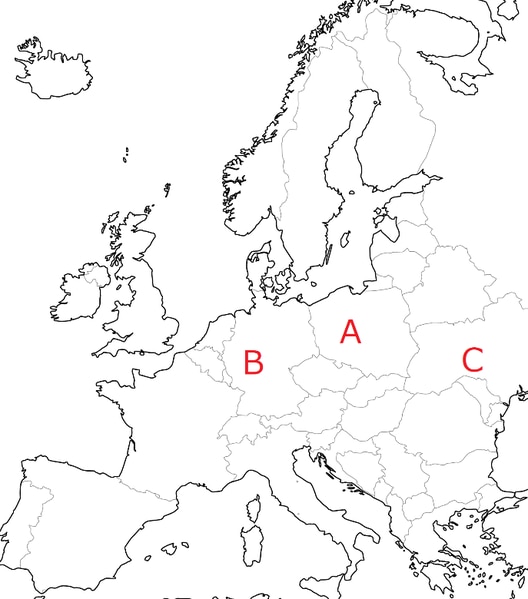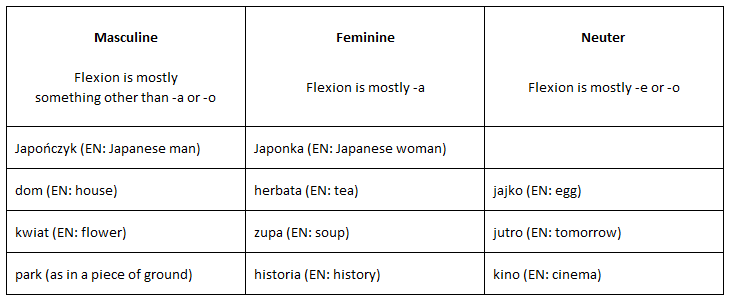Note: This blog post was originally written in Japanese for our Japanese website. We used our machine translation platform Translation Designer to translate it and post-edit the content in English. The original Japanese post can be found here.
As more companies go global, there are more needs for multilingual translation. To meet those needs, translation companies like us support not only a certain combination of language pairs such as English and Japanese translation, but also multilingual translation.
In our previous posts, we have so far introduced multilingual translation in relation to FIGS (French, Italian, German and
Spanish), simplified Chinese and traditional Chinese, and Arabic. In this post, we will talk about Polish and some points to be aware of when translating the language.
What kind of country is Poland?
The country where Polish is spoken is, of course, Poland. However, there are probably few people who have a concrete image of what kind of country Poland is in the first place.
Let’s start off with a quiz. Which of the following flags is the Polish flag?

The correct answer is C. Composed of white and red, it has the same colors as Japan’s flag.
Next, what about the location of Poland? Which of A, B or C on the map below is Poland?

The correct answer is A.
By the way, B is Germany, C is Ukraine, and Russia is located to the east of Ukraine. Thus, Poland is geographically sandwiched between Western European countries and Russia and has historically been constantly under threat of foreign invasion.
In fact, from 1793 to the end of World War I in 1918, Poland disappeared from the world map for about 100 years as it was split between Russia, Germany and Austria. Despite a long period of partition, however, Polish is still spoken, and this is a testimony to how Poles are proud of their language and have inherited it with great care.
Polish language and its characteristics
Number of speakers and mainly spoken areas
Polish is spoken worldwide by about 50 million people, of which about 38 million are in Poland. Polish belongs to the Slavic language, and its pronunciation and grammar are similar to Russian.
There are some common words, and the similarity of the two languages makes it possible for Russians and Poles to understand each other to some extent even if each of them speaks in their own language.

Polish alphabet
Having said Polish is similar to Russian, Polish nevertheless has significant differences from Russian. First of all, let’s take a look at the website of the Russian Embassy in Japan.

Unfamiliar characters that are different from the English alphabet are lined up. They are called the Cyrillic alphabet, and this is the writing system the Russian language uses.
Now, let’s see the website of the Embassy of Japan in Poland.

You’ll notice that Polish uses Latin alphabet unlike Russian that uses Cyrillic ones. However, the alphabet is not exactly the same as English. As you can see below, some of them have different shapes.

Religion played a large part in this.
After the spread of Christianity in Europe, the Poles have widely worshiped the same Western Church as Western Europeans, rather than the Eastern Church that is worshiped in Russia and much of Eastern Europe. It is believed that the fact that Latin alphabet was used in the Bible of the Western Church is the reason why different script is used even though both languages belong to the same Slavic language group.

Masculine, feminine and neuter nouns, which have nothing to do with actual genders
As those who have studied European languages may be familiar with, nouns in many European languages have genders. Polish nouns also have genders. There are three types: masculine, feminine, and neuter.
All nouns fall into one of these three categories, as shown below. If a noun refers to a living thing, the noun’s classification may be determined by the gender of its referent, but in many cases, nouns are classified by their flexion regardless of their actual gender. (See the table below.) You might think, “What's wrong with that?” But in Polish, the gender plays a very important role.

Complex Polish case inflection
When you want to speak or study Polish, the grammatical case is important. Let’s illustrate this point with examples.
I love you.
You love me.
Both “I” and “me” are watashi in Japanese, but they change as watashi wa for “I” and watashi wo for “me”. The same thing happens in Polish.
Let’s take “tea” (herbata) as an example and see what happens to it in Polish. See the sentences below.
To jest herbata. (This is tea.)
Ja piję herbaę. (I drink tea.)
Did you notice the change from herbata to herbatę?
The form of the word changed from herbata to herbatę so that it is in the correct grammatical case. In addition, it is necessary to change the form of the noun depending on the role it plays — that is, its grammatical case — in a sentence. It will change according to the context, such as “in” a tea or “of” a tea.
Polish has as many as seven grammatical cases, whereas Russian has five cases. And, depending on the gender of the noun (masculine, feminine, or neuter), there are different declension rules. In other words, with nouns alone, there are 21 patterns of declension (3 noun genders × 7 cases).
The inflection also occurs in verbs and adjectives, each with its own rules. The inflection occurs in Polish all the time, and sentences are created as if by fitting the pieces of a jigsaw puzzle in their right place.
As you can imagine, this is extremely difficult for people who are not native to the language.
Polish is complex!

Names of people and places also change
Another characteristic of Polish is the case inflection even in names of people and places.
For example, if there is a person named Maya and you’re calling her in Polish, it will be Mayo. If your name is Maya and you are suddenly called Mayo, you may not be able to respond.
If you have the surname Sasaki, this name will change too. For example, if you want to say “Sasaki-san’s house,” it will be as follows.
dom Pana Sasakiego
Note: Pan means “Mr.” in English.
It may be strange for many Japanese named Sasaki to see their name change from Sasaki to Sasakiego.
Names of places, too, change mercilessly.
Osaka is also Osaka in Polish, but when it comes to “in Osaka,” for example, it changes as follows.
w Osace
Note: w means “in” in English.
Osaka and Osace sound completely different in Japanese, but this is normal in Polish. If someone says in Polish, “I ate takoyaki in Osace,” you may wonder what Osace is and may take some time to realize that it’s Osaka.
When translating from Polish to Japanese, you need to be careful not to write the inflected proper nouns in the Japanese katakana script as they look or sound.
Kawamura's translation services
At Kawamura International, Asian languages such as for East Asia and Southeast Asia are taken care of by our local subsidiary in Hong Kong, and European languages including FIGS languages are handled by our local affiliates in Europe. We support more than 40 languages and provide professional translation services in all these languages.
Feel free to reach out to us if you need professional translation services or have any other questions about translation and localization services in general.
_CMYK_OL.png)

